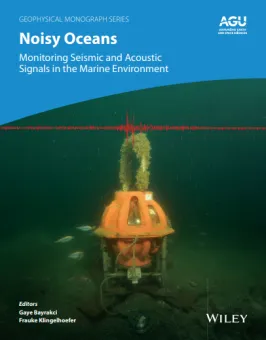
A brand-new textbook “Noisy Oceans: Monitoring Seismic and Acoustic Signals in the Marine Environment” has brought to life the diverse soundscape of the ocean and its impacts on marine life and human society.
The book, published by AGU/Wiley & Sons and edited by Dr Gaye Bayrakci from the National Oceanography Centre (NOC) and Frauke Klingelhoefer from the French National Institute for Ocean Science (IFREMER) delivers a comprehensive guide to understanding the marine soundscape.
The impact of sounds within the Ocean can often be overlooked. But with its depths teeming with diverse life and dynamic natural events, the Ocean is anything but silent.
Special measuring devices such as ocean bottom seismometers and hydrophones were designed to detect earthquakes but picked up many other unexpected signals. These were previously ignored as background noise from unknown sources, but advanced technology now gives scientists insight into the noise created by everything from underwater landslides, icebergs, ships and hydrothermal vents to whales, rain, marine engineering, and more.
Dr Bayrakci says “In recent times, anthropogenic sound sources, such as marine engineering and construction, seismic experiments, and marine traffic, have been increasingly part of the mix. With growing concern about the impact of human activities in the ocean, understanding the changing marine soundscape and its impact on life in the oceans and human societies is becoming increasingly important”.
“Noisy Oceans: Monitoring Seismic and Acoustic Signals in the Marine Environment” is a comprehensive guide to non-tectonic marine noise originating from different environmental, biological, and anthropogenic sources.
Book highlights include:
- Overview of marine soundscapes and their sources
- Existing and new methods for studying acoustic signals
- Case studies from around the world
- Spans disciplines from geology and geophysicists to biology
- Explores the impacts and implications of marine noise